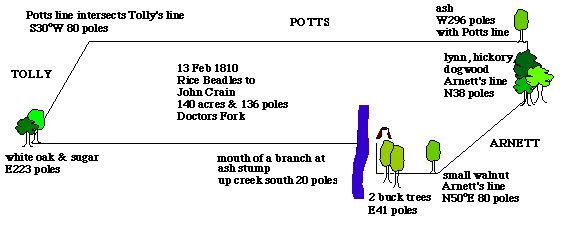
Recorded Plat Survey System (Lot and Block Survey System) For example, an object to the East would have an absolute bearing of 90 degrees. The Bearing System uses degrees, minutes, and seconds for measurement and describes the angle between true north and an onjecy. Additonally, Metes and Bounds uses the Bearing System. Metes are a measure of length and bounds are boundaries. Metes and Bounds are a legal real estate land system used to describe irregular parcels and plated subdivisions. Quadrangles → Townships → Sections → Parts 2.

(37 principal meridians in US) as starting points. The creation of the legal description for the Governmental Survey System is based on special longitude and latitude lines called principal meridians and base lines. This system created a checkerboard of identical squares using longitude lines (north/south) and latitude lines (east/west). The system was created by Thomas Jefferson in 1785. Government Survey System (Rectangular Survey System) Public Land Survey System (PLSS)Īfter the Revolutionary War ended, the United States Government needed a way to describe lands in the West to insure locating and selling. Recorded Plat Survey System (Lot and Block Survey System)ġ.Government Survey System (Rectangular Survey System or Public Land Survey System).There are three (3) major types of legal land descriptions used throughout the United States. Try it on a blank piece of paper and you’ll get the point.In order to buy and sell real estate, there must be in place a method whereby the property being sold can be accurately identified. For example, if the property is square, I might start at the south east corner, then walk north east to a point, then turn 90 degrees north west to a point, then 90 degrees south west to a point and finally 90 degrees south east back to where I started. Think of the description in the physical sense of walking around the property. While the bearings on a survey will always show northerly orientation (statutory law requires it), the actual description (the words) include both northerly and southerly directions. the bearings must always be referred to on a survey based on their northerly orientation.compass bearings (degrees, minutes and seconds) must be used based on true north and.the description must enclose the property with no gaps,.

More precisely, it describes the land by setting out compass directions and distances. In combination, ‘metes and bounds’ has come to mean the boundaries or limits of a particular parcel of land set out in terms of terminal points and angles.

Metes: In medieval English, it meant ‘measurement’.īounds: Just think in terms of ‘boundaries’ (the bounds of the property). Technically, all this started in medieval England with the development of common law, but let’s leave that for another time. (Fortunately, it didn’t extend to driving on the left side of the road). As a British colony, we inherited a bunch of weird terms from Jolly Olde England e.g., fee simple, fee tail, freehold, and metes and bounds.

Like it or not, metes and bounds descriptions lie at the heart of Ontario legal descriptions.


 0 kommentar(er)
0 kommentar(er)
